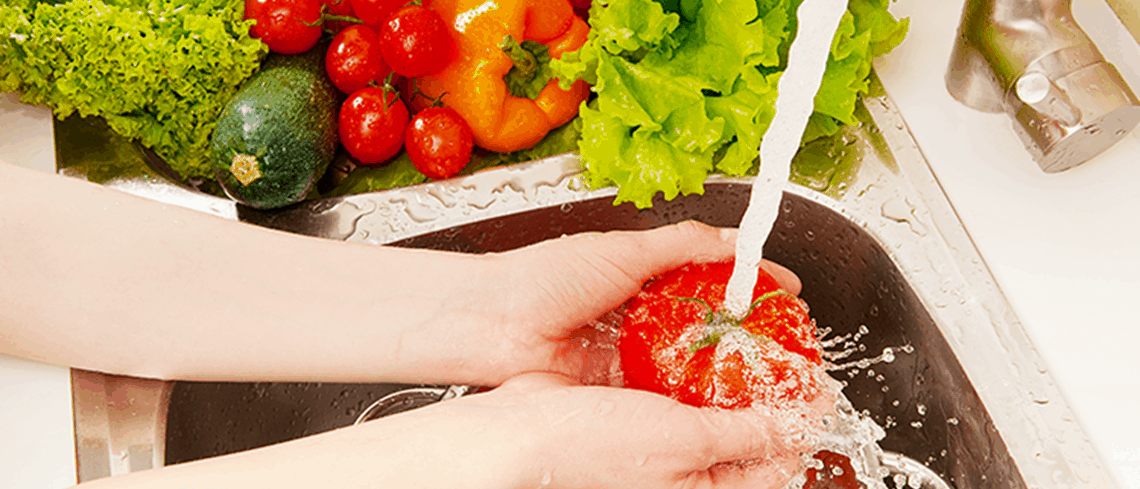Food hygiene rules to live by
How many times have you experienced the torment caused by food borne illnesses? Surely multiple times and if you haven’t tasted the pain yourself then definitely someone around you must have. The point here is that thousands of people around the world are subjected to food borne diseases every day and it’s definitely a tough situation to deal with especially if it’s an infectious disease.
Because contagious gastroenteral diseases tend to spread by leaps and bounds when provided with favorable conditions such as contaminated food and water, it has become really important to follow the food hygiene rules.
What is food hygiene?
Food hygiene or food safety is a set of guidelines that basically interprets the health authorities’ advice given regarding preparation and handling of food. Every year millions of people succumb to diseases such as cholera, Ebola, and hundreds of other food borne illnesses. What is more intriguing is that all of this suffering and pain can be prevented only if people take care of hygiene measures while preparing or dealing with food.
The horrors of contaminated water
For underprivileged segments of the society where it’s not possible to wash hands with bar soap times and again because of the unavailability of water, such diseases wreak havoc every now and then. These are people who can’t afford the necessity of washing hands because they don’t even have clean water to drink – imagine the pain and suffering. Health authorities around the World have pledged often to help out such populations but in order to eradicate this problem, collective global effort is required.
What should you do?
Now that you know and understand the importance of hand hygiene and food safety let’s take your through some basic food hygiene rules that you should definitely follow. If you are someone associated with food handling or food preparation for example a restaurant owner then you should ensure that you, your employees, and your customers are following these guidelines.
Follow proper hand hygiene
This is the single most important step of all the precautions/guidelines/measures that you’ll come across with. Wash your hands with soap and water for 20 seconds as recommended by centers for disease control and prevention (CDC) to kill all germs and keep yourself and others safe.
Ask the customers to wash hands too
You should make sure that everybody including the customers walking in should also follow this step because they can also come in with sorts of microorganisms and affect your hygienically prepared food. Get hand sanitizer dispensers installed throughout your restaurant so that those working in kitchen, serving area, and dining area all can clean their hands instantly. Also place bottles of sanitizer on each table.
Keep the working area clean
Ask your employees to eat away from the kitchen because splatter and crumbs from their mouths can affect the food preparation surfaces. In this way the sanctity of your kitchen would be distorted without you even knowing and microorganisms might get into the prepared food. Eating away would help keep the leftovers, crumbs, and other spillage away from working area which would remain extremely clean.
Disinfect surfaces
Choose the best disinfectant cleaner that can go aptly with all of your kitchen flooring. Make sure that you know the contact time and its efficacy so that no damage is done while you are scrubbing your floors. Keeping the kitchen floors free of germs is indispensable to following the food hygiene rules as spillage during food preparation can really provide an opportunity for unwanted pathogens to spread. In order to prevent the spread you need to continuously disinfect the floors.
Clean chopping boards
For worktops, cutting boards, and other food chopping/cutting surfaces use a cloth and kitchen cleaner to knock off germs. Uncooked food like raw meat and poultry is often full of microorganisms and if you don’t clean chopping boards after each use, you are giving these pesky microbes a free hand to breed and spread. Gently wipe down all of these surfaces after each use.
Don’t mix
Mixing cooked and uncooked food is an unforgiveable blunder and one that you and your employees should clearly avoid. Uncooked food has tons of germs on it and often times people choose to spray disinfectant on food packaging but placing such food alongside the cooked food can transfer these germs, making the person eating food sick and ultimately ill. You should always try to have separate areas for both sections.
Hope you now know how important these food hygiene rules are and that you’d follow them now. If you still have any confusion, you can ask us right away.
